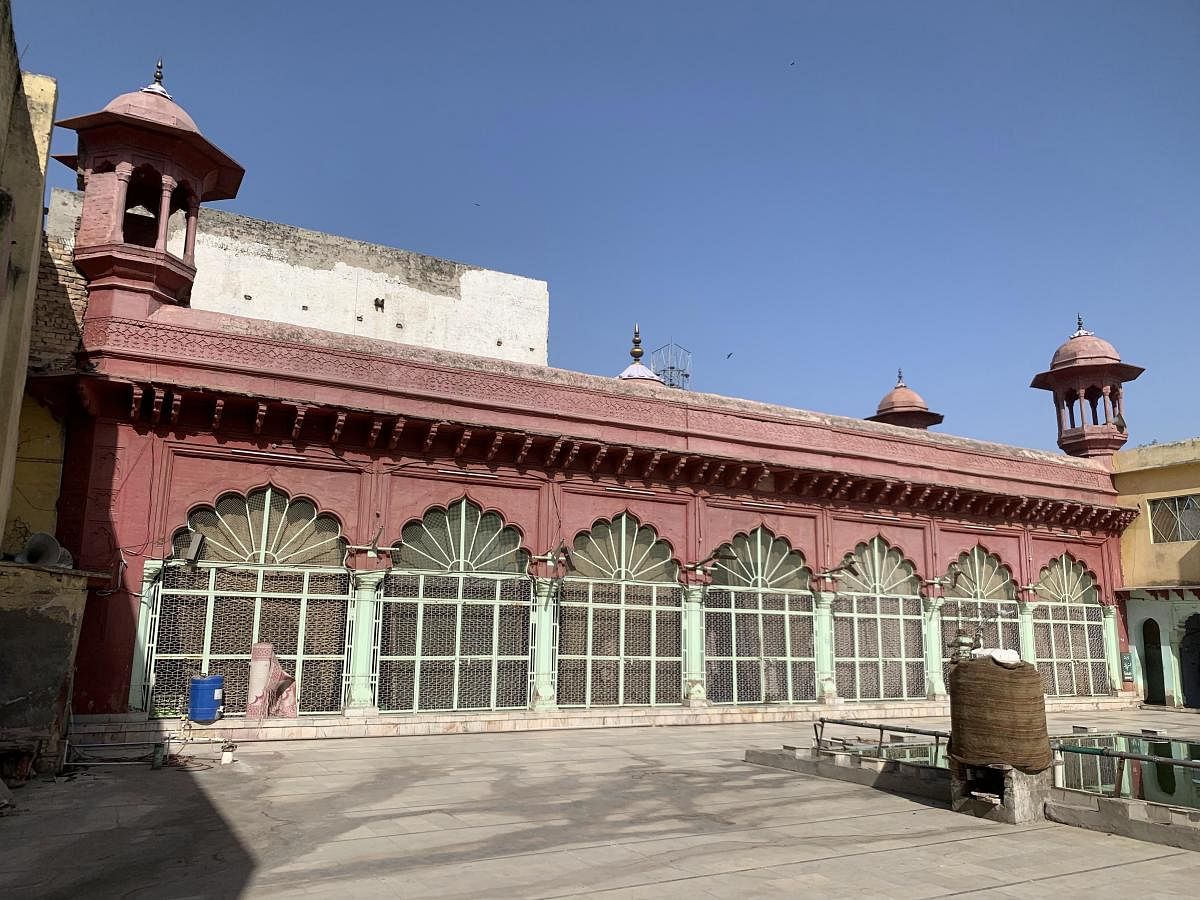

The history of Agra before the Mughals came along is shrouded in mystery except for a period when the Lodhis shifted their court here. Agra’s fortunes coincide with those of the Mughals who made it their capital and graced the city with beautiful gardens, palaces, tombs and mosques.
Many structures built by the Mughals continue to survive, however, not all of them receive the attention they deserve.
Hardly visited by tourists, many find themselves not even on the list of protected monuments. There is definitely more to Agra than the Taj Mahal, as seen by these lesser-known Mughal mosques.
Sandali Masjid
This mosque was erected in honour of Kandhari Begum, the first wife of Mughal emperor Shah Jahan, and stands just a few metres from the Taj Mahal’s main entrance. Apart from Mumtaz Mahal, Kandhari Begum is claimed to be Shah Jahan’s sole child-bearing wife. The mosque erected in her honour is known by various
names, including Kali Masjid, Jinnati Masjid, and even Blliyon “cats” Wali Masjid owing to the huge number of cats that inhabit the area. Kandhari Begum was the youngest daughter of Sultan Muzaffar Husain Mirza Safavi, the Safavid ruler. At the age of 15, she married Shah Jahan in 1609.
Mutamid Khan’s Mosque
Mutamid Khan erected a mosque in the Kashmiri market during the reign of Emperor Jahangir. Mutamid Khan served as the Mughal emperor’s secretary. Much of the region’s red sandstone was utilised in its construction, giving it a unique Mughal-era appearance. Mutamid Khan is also claimed to have helped Jahangir finish his biography, The Jahangirnama. It was one of Agra’s most beautiful public structures at the time, however, today haphazard construction has entirely changed its appearance.
Kalan Masjid
This mosque was once said to be the principal mosque of the city and continues to be one of the biggest mosques in Agra. Nawab Muzaffar Khan (d. 1580) constructed the Kalan Masjid, today known as the Kali Masjid, during the reign of Emperor Akbar.
Shahi Madrasa Masjid
The beauty of this mosque lies on the inside, despite the fact that it appears to be a modest conventional mosque from the exterior. If you enter, you will witness calligraphy by Amanat Khan Shirazi. Amanat Khan is the same person who is credited with the calligraphy on the Taj Mahal. Zoom in and look closely to see the magnificent artwork on exhibit in this mosque. Unfortunately, it’s hardly visited by tourists.
Akbari Masjid
This is one of the smaller mosques from Akbar’s reign located in a bazaar called the Kinari Bazaar. This mosque, like other Akbari structures, is made of locally available red sandstone. Under Akbar, Agra came to be called ‘Akbarabad’.
Shahi Lal Masjid
Only two of the original three domes survive. The mosque’s northern wing has fallen. The entire ceiling is supported by carved stone pillars and jagged archways that link the prayer hall’s wings. It contains numerous architectural aesthetic characteristics that are typical of Mughal architecture.
Bhuri Khan’s Mosque
Sikandara is home to Bhuri Khan’s Mosque. Little is known about it, although it may date back to the reign of Emperor Shah Jahan.
It, like many other old Mughal constructions, is pleading for help, and if it does not receive it, it may not survive the next monsoon downpour.